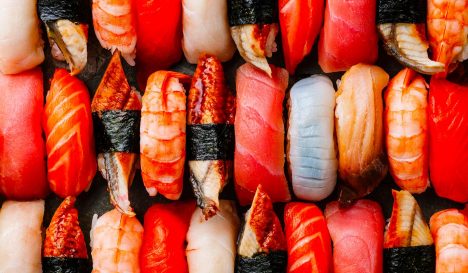Pulpo a la gallega


Pulpo a la gallega
- What is pulpo a la gallega?
- Did you know...
- How to make pulpo a la gallega
- How to eat
- Please consider
- Also try
-
Kitchen Spanish cuisine
-
Allergens Molluscs
-
Basis Meat / fish
-
For who Seafood-lovers
-
Spiciness pepper pepper pepper
What is pulpo a la gallega?
Pulpo a la gallega (pronounced: “Pool-po alla gall-yay-ga”) is a squid dish from the state of Galicia in north-western Spain. You only need four ingredients, namely cooked squid, olive oil, ñora (paprika) and salt. The resulting dish is amazingly simple: pleasantly resistant between the teeth, filling, savoury and healthy, too.
Pulpo a la gallega was traditionally eaten at markets and parties in the Galicia region and is therefore also called pulpo a feira (feira means “annual fair” or “folk festival”) or polbo a feira in Galician. Meanwhile, the whole of Spain has been won over by the dish.
Did you know...
Originally, the squid was cooked in a copper pan, giving the fish flesh an orange tinge and an interesting mineral taste. In the absence of a Harry Potter-like cauldron, a copper coin can also be boiled in the water.
How to make pulpo a la gallega
With so few ingredients and even fewer cooking instructions – cook the squid, mix with oil, pepper and salt – it is not surprising that the secret of a good pulpo a la gallega is in the preparation of the squid itself. Squid more than lives up to its reputation as the flesh does indeed become rubbery quickly; the trick is to get the timing right. Traditionally, fresh squid is used, because Galicia has quite a bit of Atlantic coastline.
The cleaned squid must first be flattened to make it tender. These days we usually let the freezer do this hard work; by first freezing and then thawing the squid, the flesh becomes tender.
A large copper pan of water is brought to the boil and the (whole) squid is first dipped a few times with its tentacles in the boiling water until the tentacles curl up. Depending on the size, the squid must be cooked for exactly the right number of minutes; too long and the flesh becomes as rubbery as feared, too short and the squid will still be soft. A good pulpeira (squid chef) knows how to choose the precise moment to fish the squid out of the water.
The squid is then cut into bite-sized pieces with scissors, sprinkled with salt and ñora (paprika), then drizzled with olive oil.
How to eat
In Galicia, pulpo a la gallega is still served, just like in the old days, on round wooden boards with cocktail sticks to pick up the pieces of squid. It will be eaten on the spot, usually as a racion (large portion or main meal). Elsewhere, pulpo usually forms part of the tapas menu and it is served in smaller portions.
Please consider
Traditionally, the dish is served with bread or potatoes as the latter is a traditional crop in Galicia. Drink chilled young red wine with your meal to be truly authentic.
Also try
Another Spanish squid tapa is calamari – squid rings fried in batter. The Japanese like to eat their squid raw, as a nigiri or as sashimi.






